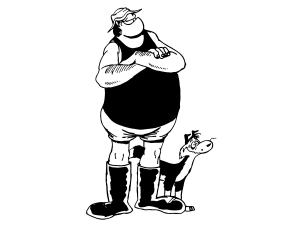The latest survey of farmer confidence from Federated Farmers does not make pretty reading, says BNZ senior economic Doug Steel.
But it's not all doom and gloom.
Of those farmers surveyed, nearly 56% thought general economic conditions would worsen over the next 12 months, while fewer than 5% expected improvement.
“The net figure of -51.4% is the lowest in the 10-year history of the survey. Net pessimism surrounding the outlook is widespread across all major industries and regions,” said Steel.
However, farmers’ perceptions of current general economic conditions remain net positive – if only just. Nearly a quarter of farmers surveyed saw good general economic conditions currently, while just over 21% of farmers cited bad conditions at present.
“So the net is still positive, even if the current 3.6% is much less so compared to the 20.3% reading in the previous (January) survey.”
Global economic uncertainty given recent developments in US-China trade tensions, unrest in Hong Kong, and ambiguity regarding Brexit could be impacting farmers’ outlook.
Yet primary product prices have been holding up well at good levels.
“Be that as it may, there is still reason to keep your eyes open for what might lie ahead,” Steel said.
If the US-China trade war turned Chinese demand in New Zealand’s direction NZ would struggle to supply all produce required.
“But even if there was some demand improvement via this channel, there are other implications to consider,” he said.
“For example, the US produce (largely feed products) not bound for China would have to find a home elsewhere, pushing prices down in the process. Lower feed costs in the US would likely encourage more production and lower prices for beef and milk compared to otherwise. This aspect would be a negative for NZ farmers.”
US feed product demand from China has already been curtailed as a result of a major cull of pigs in China due to African swine fever.
“The latter brings with it its own lift in Chinese demand for meat imports, including from NZ. The export share of NZ beef and lamb bound for China continues to rise aggressively. This has added to an already strong positive trend of more NZ primary product exports bound for China.”
But if uncertainty prevails, world economic activity is likely to suffer as a result.
There are other pressing issues afoot. “Environmental challenges continue to increase for the agriculture sector. This includes the Government’s recently announced targets to reduce biological methane emissions by 10% by 2030, and a further reduction aim of 24% to 47% by 2050.
“The Government seems keen to put a price on agriculture emissions as the mechanism to incentivise emission reduction, at the farm level from 2025 if feasible. In the interim, for 2021 to 2025 the Government is looking at pricing at the processor level through the emissions trading scheme (ETS).
“The Government has committed to a 95% free allocation of agricultural emissions included in the ETS through to 2025. The Zero Carbon Bill is currently being considered by a parliamentary select committee.”
An alternative, industry led proposal would support reductions in farm emissions via a formal sector-government agreement, says Steel.
“Under this proposal all farms would have a farm environment plan in place by 2025. By then, the aim would be to have an appropriate pricing framework in place to practically implement at farm level.”
There are many pros and cons, he says.
“For the first time in the 10 year history of the Federated Farmers survey, the single greatest concern for farmers was climate change policy and the emissions trading scheme. Of all farms surveyed, 23.6% identified this as their greatest concern.”
The second biggest concern, cited by 19.4% of those surveyed, was regulation and compliance costs. Regards employment, farmers are reporting yet more difficulty in finding appropriate staff.
Not all doom and gloom
Generally buoyant farmgate prices across most of the sector are welcome, says Steel.
Some international prices have eased back a bit from recent highs, but an associated dip in the value of the NZ dollar has helped support prices at the farmgate.
“Farmers themselves are showing less concern about farmgate and commodity prices, with only 6% citing this as their top concern in the Federated Farmers survey (down from 14% six months ago),” he said.
“The flexibility of the currency may well prove useful in future too, if some of the potential negatives discussed above play out. Indeed, with an eye on worsening trade tensions offshore we recently lowered our NZD forecasts for the end of this year and into next.”



















